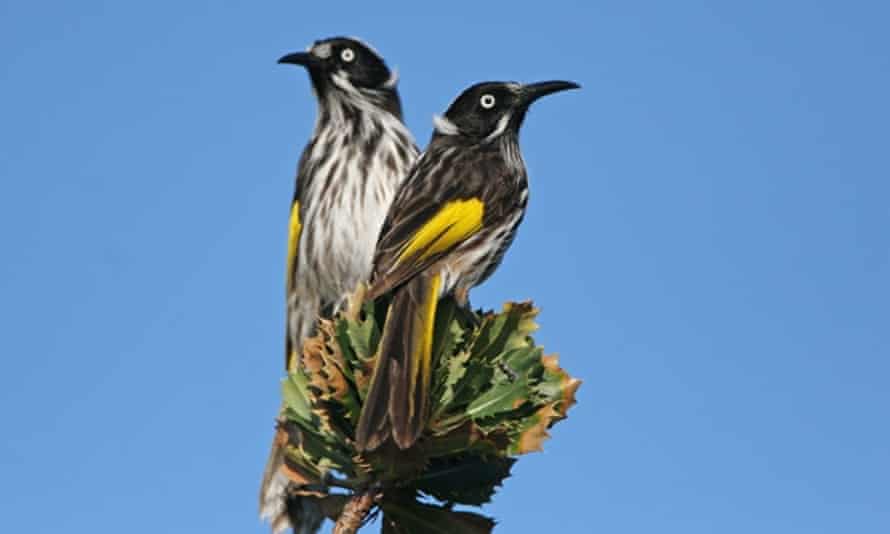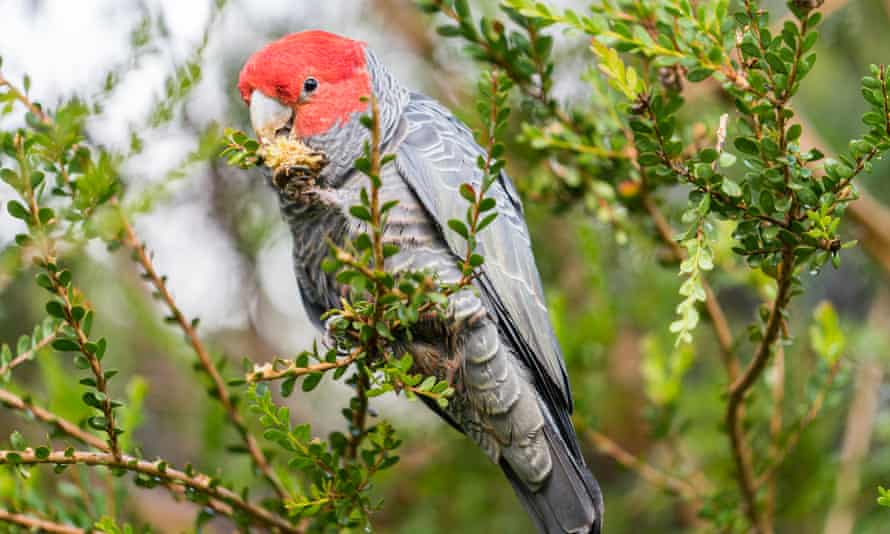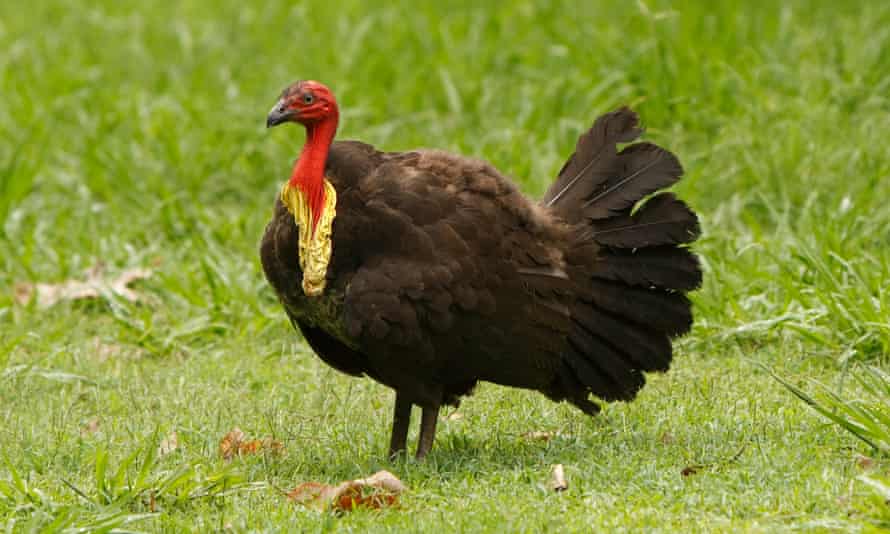Australian bird of the year 2021: a look at some of the early contenders
From crowd favourites to more unusual picks, these are the birds Australians are flocking to nominate

Budding birders are flocking to nominate their favourite feathered friends for Guardian/BirdLife Australia’s 2021 Bird of the Year.
“I find this groundswell and outpouring of love for our birds really heartwarming,” says Sean Dooley from BirdLife Australia.
“This is done kind of for fun. But it also demonstrates how connected so many of us are to our birds.”
He says there is a great diversity among the nominations received so far.
“You have the exotic and colourful nominations. But you also see the less glamorous birds. The glorious little ones that are common and fly under the radar.
“There are birds that you’d think there wouldn’t be much love for, like ravens. They generally get a bad rap. But people are passionately advocating for ravens!”
This year there will be a special focus in the shortlist on the birds many of us are likely to see in lockdown in our back yards and while out for exercise, as well as a few endangered species specially selected by BirdLife Australia to draw attention to their plight.
We are providing an opportunity for readers to get in early and nominate their favourites to add to the shortlist.
Tell us in the comments below the bird you’d like to see on this year’s list or nominate your bird on Twitter or Instagram with the hashtag #BirdOfTheYear. The shortlist will be announced on 27 September.
Here’s a look at some of the contenders so far.
Crowd favourites

New Holland honeyeater
The black, white and yellow feathered bird is a resident of forests, woodlands and gardens across the south of Australia, from Brisbane to Perth. Often found gathering and travelling in groups, one Guardian Australia reader tweeting from South Australia says the back yard “shenanigans” of their resident new holland honeyeaters have “kept us happy … throughout illness, grieving and lockdown”.
Tasmanian native hen
Dooley says this heavy, flightless bird is an “affectionate favourite among Tasmanians”. Also known as the turbo-chook, its legs are slim, sturdy and long. As one Guardian Australia reader comments, “it might not fly but it sure can run”.
Grey butcherbird
Though a popular nominee, don’t let the lilting song of the grey butcherbird fool you. Its hooked beak is not one to mess with. Protective of its young, a grey butcherbird may swoop toward your face with a loud cry if you venture too close to its nest. Their name comes from the way they catch and hang their prey off a tree branch, and “hack the meat away”, according to the Foundation for National Parks and Wildlife’s Back Yard Buddies initiative.
Gang-gang cockatoo

With its name hailing from the Ngunnawal and Wiradjuri New South Wales Aboriginal languages, gang-gang cockatoos call many parts of south-eastern Australia home. “We are doing work at BirdLife on the gang-gang. It is already endangered, and is being affected by the bushfires,” says Dooley. “It is uplifting that it is one of the most common nominations I’ve seen.”
Spangled drongo
Comments from Guardian readers call their red eyes and glossy-black plumage “beautiful”, “marvellous” and “chic”. Its ‘spangle’ comes from iridescent blue-green spots across its plumage. Found throughout northern and eastern Australia, the spangled drongo tends to avoid dense forest areas and frequents mangroves, woodlands and parks.
Kookaburra
The famous song of the kookaburra is bringing “lots of smiles” to readers in lockdown. And one particular kookaburra enjoying a good scratch has caught the attention of many.
I nominate this guy for #BirdoftheYear
No, not kookaburras. This individual bird specifically. pic.twitter.com/7fVvINXVco
— sean (@number30five)
Spotted pardalote
“It’s a small little bird, but the people love it,” says Dooley of the spotted pardalote. Its body and bill are short and stubby. Its feathers blend black and beige, with bright yellow patches near its front, and red near its rump. Dotting its plumage are stark white spots, coining the spotted pardalote’s name. Tunnelling nests and burrows into soil banks, and travelling through high canopies of woodlands, the bird is most recognised for its call; a distinct, high-pitched and repetitive ‘ding’.
Musk lorikeet
Flowering trees in Victoria and some parts of NSW and South Australia attract this colourfully bedecked bird. Often enjoying the canopy of a eucalyptus tree, musk lorikeets also frequent suburban parks and streets. When they do, their chirpy demeanour, noise and activity can make a “huge difference” during lockdown’s “precious hour outside”, as one reader tweeted.
Ibis

Team bin chicken held a strong campaign against the magpie in 2017, coming in second with an impressive 19,083 votes. It slumped two years later, placing tenth on the 2019 scoreboard with just 1,147 votes. Can the efforts of team bin chicken take the inner-city dwelling ibis to the shortlist and beyond, or is it four years too late?
Unusual picks

Brush-turkey
The native Australian brush-turkey gets its name from its appearance, with a rather turkey-like bright red head, a deep blue-black plumage, and a wide flattened tail. Often found traipsing around and digging up suburban gardens across eastern Australia, the brush-turkey has caught itself a bad reputation. The bird does, however, carry with it an ancient prestige. It is part of a family of birds including peacocks that dates back 30m years, with its mound-digging and egg-incubation processes described as extremely primitive.
Lord Howe Island woodhen
Lord Howe Island woodhens are a flightless bird found exclusively on, you guessed it, Lord Howe Island, east of Port Macquarie. Before the island was settled in the 1830s, they populated subtropical rainforests of the island with no fear of predators. The island’s increasing population, and introduction of foreign species such as owls and cats, began hunting the woodhens for food. The species’ numbers quickly declined. The bird is listed as endangered under the NSW Biodiversity Conservation Act 2016.
Brolga

The brolga, also known as Australia’s crane, is the country’s largest waterbird. In the Aboriginal language Gamilaraay, the bird is known as burralga. Known for its graceful movements and elaborate courtship dances, a number of Aboriginal dances associate with and mimic the movements of the brolga, according to Bush Heritage Australia.
Apostlebird
A species fond of company, the apostlebird got its name from its habit of travelling in groups of up to 30 birds. Known to hang out in mobs and squabble all day, early settlers likened the birds and their communal lifestyles to that of Jesus and his group of followers.